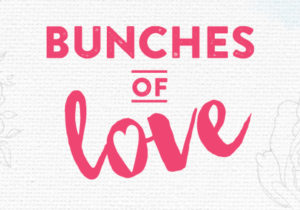As simple as it is to put together, a well-arranged charcuterie board just oozes sophistication. There are so many reasons why people, both young and old, love them. Apart from being aesthetically pleasing, there is a satisfaction about being able to pick and choose what you want to eat that ‘organized’ appetizers just don’t give.
What to put on a charcuterie board?
The word charcuterie comes from the French word for a butcher’s shop. So naturally, meats are a must have on a charcuterie board. Typically, a charcuterie board will include:
- Various cured meats
- A mixture of soft and hard cheeses
- Fruits
- Olives and pickles
- Nuts and dried fruits
- Crackers
- Jams, tapenades, and chutneys
The most important thing is to have a variety of different flavors on the board – sweet, salty, sharp, and tangy – that people can combine as the evening goes along.
How to build a charcuterie board?
The arrangement of a charcuterie board is as important as what you put on it. Thankfully, you don’t need to be an artist to make a charcuterie board look delectable.
The Board:
The shape of the board doesn’t really matter – it can be round, square, rectangular, or any other funky shape you like – it just needs to be big enough to accommodate all the tidbits you’re planning to serve. Remember though, the larger the board, the more ingredients you’ll need to fill it up.
Start with bowls:
Put the nuts, dried fruits, olives, olive oil, and jams in small bowls and arrange them on the platter.
Cheeses:
Arrange the cheeses around the board. Try and keep space between the cheeses so they don’t touch. You can even cube or slice hard cheeses and arrange the on the board to make serving easier.
Meats
Fold your cured meats and place them around the cheeses. It can be a good idea to place meat and cheese pairings next to each other so that it doesn’t matter if they touch and become easier to serve.
Crackers:
Add stacks of crackers around the board. They don’t need to be neat – slightly toppled stacks make your charcuterie board look bountiful. Small piece of bread
Fruits:
Use any gaps left for fresh fruits and veggies. Herbs like parsley, basil, and rosemary look great and pair well with cheeses and meats too.
Cutlery:
Make sure you have different knives for each of the cheeses and individual spoons for the dips and spreads.
Great Pairings for Your Charcuterie Board
While people do love to experiment by mixing different flavors on a charcuterie board, having a few classic combinations presented on the board can help you make recommendations to your guests to get them started.
Brie, Camembert, and Fruits:
Brie and Camembert are both soft cheeses that pair well with sweet offerings like jams, fruits, or candied nuts.
Goat’s cheese (Chevre), meats, and herbs:
Chevre is another soft cheese that pairs well with sweet offerings. It has a slight tang that also pairs well with mild, cured meats like prosciutto.
Parmigiano Reggiano
This crumbly cheese pairs beautifully with Parma ham. It goes well with sweeter elements on the board too.
Gouda and Salami:
Choose a gouda you like – smoked, aged, flavored and serve it with salami on the platter. Perfect!
As you can see building a charcuterie board isn’t difficult at all. You can even arrange it to look festive over the holidays. Serve it up with a selection of wines that pair well with your cheeses and you’re good to go!

 Share This Post
Share This Post








